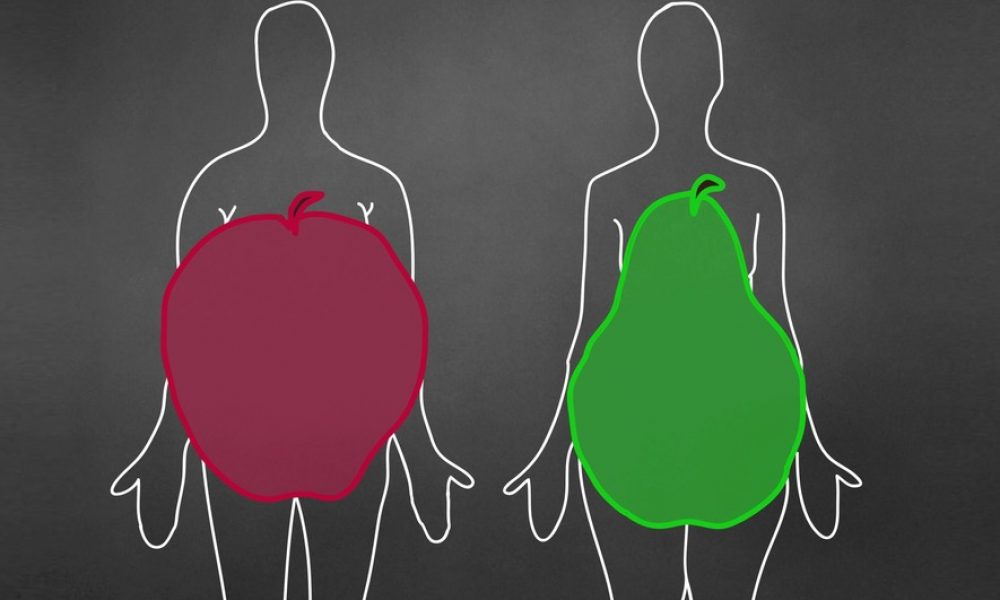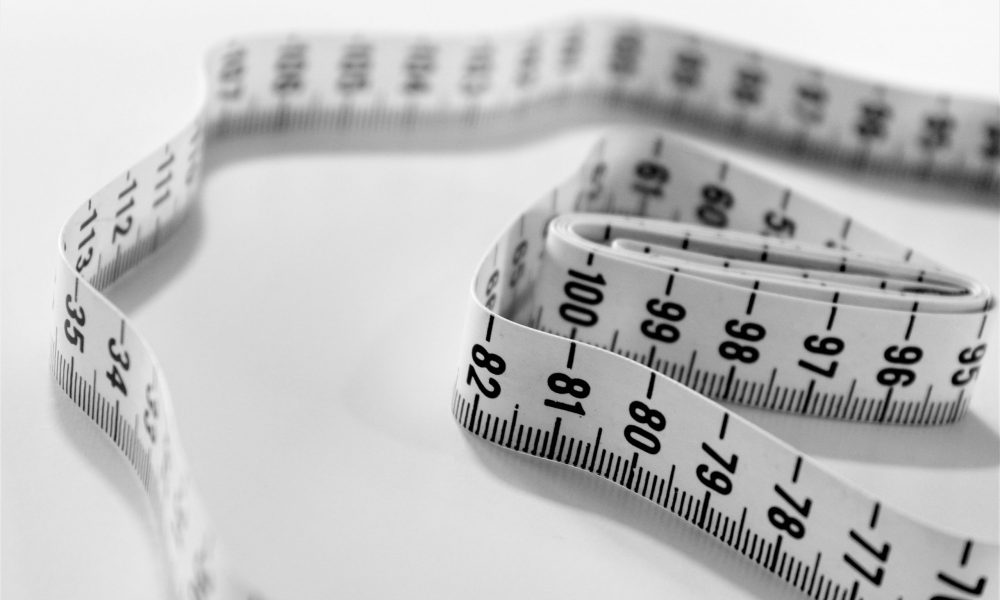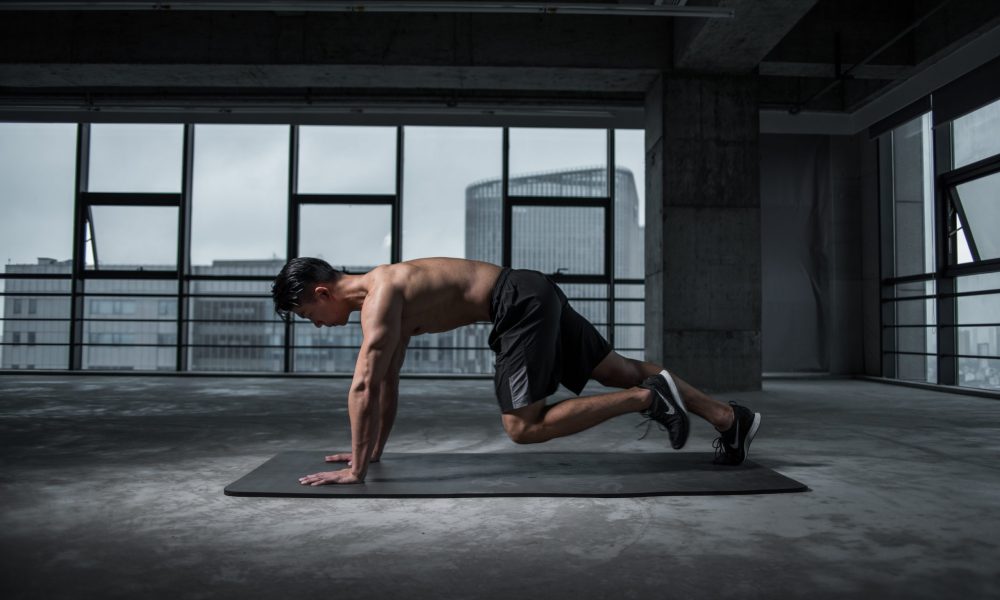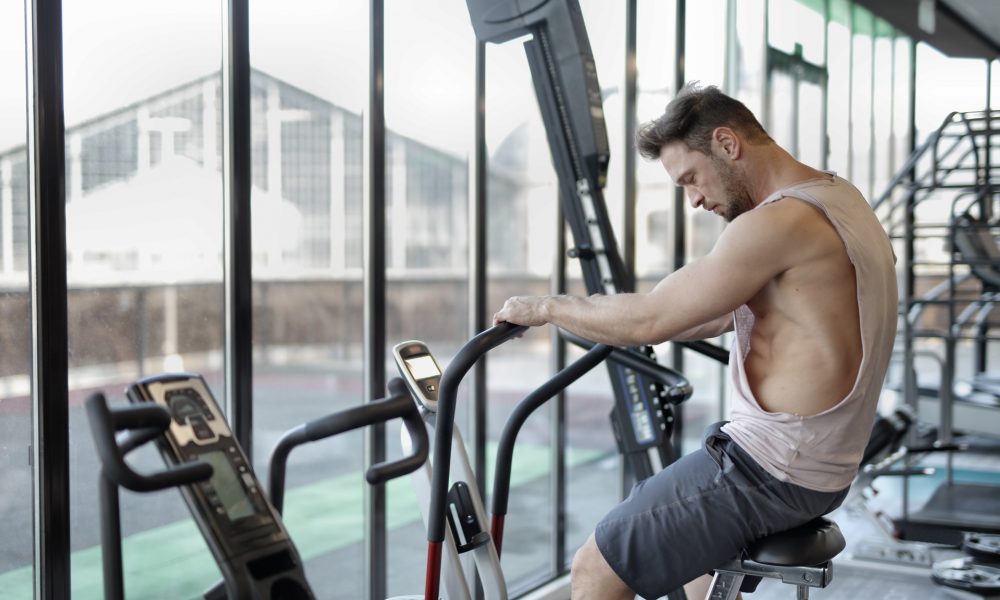
Low Carb Vs Low Fat – Dissecting the Diets
Many people approach weight loss by going low carb because they believe carbs are the evil culprit for storing unwanted blubber around their waist.

Spot reduction is the idea that you can target where you lose fat and if it’s possible, that would be the dream wouldn’t it? Unfortunately, I think many coaches enjoy crushing dreams too early including this one.
The evidence-based community has firmly dismissed spot reduction. Consequently, this stance gets frequently regurgitated with such confidence even without a second thought.
Coaches will scream to their audience how you can’t target fat loss and to stop looking for lazy quick fixes. A few years ago, I was the same way.
Fortunately, over the years I started caring less about being right in the eyes of my favorite coaches and more about finding the truth, even if it means challenging common beliefs. So let’s unveil the truth and see if spot reduction is possible and how you can do it.
Everyone labels spot reduction as an utter myth because numerous studies have fallen short of proving it’s possible (1,2,3,4,5,6,7). All of these studies essentially did an exercise (usually a strength training exercise) and tested to see if the local area near the muscle group had preferential fat loss.
The problem is, this doesn’t completely debunk spot reduction. This only tells us the one way we thought would be spot reducing, isn’t. So no, doing 100 crunches won’t preferentially burn off your beer belly, but concluding that there can’t possibly be any other way might be shortsighted.
Lifters already experience some spot reduction to an extent unknowingly. Strength training is strongly associated with a smaller waist compared to cardio (8). This is an observational study, but you would think the effects would be similar or even favor cardio because cardio generally burns more calories.
Then there is Allman et al which found belly fat breakdown, release, and burning was higher after strength training (9).
So, at least these studies shows us to some degree there is already preferential mid-section fat burning occurring when lifting compared to cardio or no exercise.
A recent systematic review found lifting alongside cardio reduces belly fat better than either alone (34). This lines up well with how to make spot reduction possible which I’ll discuss later.
One tightly controlled study took women with PCOS and split them into a reduced carb and a standard diet group (32). Both groups ate calorie matched diets, but the reduced carb group ate less carbs and more fat. Exact food was provided for both groups, so misreporting wasn’t an issue.
The reduced fat group lost more fat and had better fat distribution by the end of the study. Their fat redistributed away from more dangerous areas like the midsection.
This is hormonally compromised population, so optimizing fat intake especially for women essentially optimized their results.
However in healthy men, eating 40% above their maintenance with fat (unsaturated) produced worse belly fat storage than the same conditions with sugar (33).
The bigger takeaway as it relates to this article is that fat manipulation is possible. Other studies have confirmed this as well (37).
Fat storage physiology is another factor supporting the possibility of spot reduction. Let me explain.
Our hormones affect where we store more of our fat. We can’t change our general physiology like men will always be more apple shaped by storing most of their fat in the bellies while women will always be more pear shaped by storing most of their fat in their lower bodies (10). By default with no external manipulation, we also lose less fat where our gender disposition stores it most.
Research confirms this. Yoyo dieters have more central fat than non-yoyo dieters (35). Each time, they lose fat, they lose it everywhere based on gender physiology, but each time they gain it back, it’s mostly belly fat. Sucks huh?
However, from a hormonal perspective, we can change the degree of how centralized our fat storage is to a small extent.

For example, with more testosterone and less cortisol, men will decentralize fat, therefore storing less belly fat than their default disposition (11,12). To increase testosterone and minimize cortisol, you can get optimal sleep, minimize stress, and ensure sufficient zinc intake.
For women, they can decentralize fat with higher estrogen and less cortisol (12,13,14). Many of the same hormone optimizing behaviors apply here like getting optimal sleep and minimizing stress.
And just to be clear, decentralizing fat storage doesn’t mean you can’t get fat or that you’re completely immune to belly fat storage, it just means you’re more likely to shift some of the fat that would be stored in your middle to other areas.
Whether you actually get a net amount of fat to be stored stills come down to your energy balance (calories in vs out), but anyways, I don’t want to get too off topic. The point I was getting at is if we can control to an extent where our body stores fat, why wouldn’t we be able to control where our body loses it?
Another angle that supports spot reduction are topical creams and gels.
“Calvin, you’ve lost your mind bro! How can you vouch for these bs products???”
No, I haven’t lost my mind. And believe me, I used to think these products often marketed by try hard gurus were complete bogus too, but nearly every study I found on this topic was strikingly convincing and consistent.
No, these products aren’t as magical as commonly marketed, but they do work in increasing the fat burning potential towards a specific area. While their effect sizes are not miraculous, they’re not as small as many evidence-based coaches blindly say.
In fact, many so called evidence-based coaches will yap how these products only have a microscopic effect if any or some will say that the effects are only slightly significant when you’re deeply low in body fat like competitors, so they don’t apply to average Joes. These statements aren’t true and anyone saying them hasn’t actually looked at the evidence in this area.
For starters, why would an effect of targeted fat burning be higher only when you’re leaner? If anything, as you get leaner, you have less fatty areas to lose from and rate of total fat loss slows down, so the effects of retargeting would be less detectable compared to a fatter individual who has many fatty body parts to redirect lipolysis (fat breakdown) away from.
Research in this area generally don’t use lean people anyways and still finds significant differences. And speaking of the research, let’s talk about it, shall we?
Greenway et al were the earliest researchers on this, conducting a series of 6 trials (15). In each trial, one thigh was selected for treatment while the other was used as a control.
While these studies showed minimal adverse effects, the small sample size warrants skepticism due to the potential for type 2 errors (16). But if they are true, the treated thigh often lost fat 2-3 times as fast as the controlled thigh indicating that if done in practice, to spot reduce both thighs preferentially, you’d lose fat at about 1.5 times as fast per thigh as you otherwise would.
Fast forward a few years to 2005 and Armanini et al found topical Glycyrrhetinic acid spot reduced subcutaneous fat in a treated thigh significantly better than placebo and another group with the same ointment, but without the key active ingredient (17).
Next in 2007, Caruso et al did a study in overweight/obese men and women looking at waist circumference which is an area many people of both genders would love to spot reduce (18). They took 2 groups each with 30 (25 women, 5 men) subjects well matched for BMI and had both groups follow a 1200 calorie diet along with a walking program. One group was a control and the other group got a 0.5% aminophylline water-based cream to apply twice a day on their waist area.

After 12 weeks, the aminophylline cream group lost over twice as much waist circumference as the control group. The effect sizes is no laughing matter either (11 cm vs 5 cm). That’s more than an additional 2 inches off the waist in 3 months which any experienced coach reading this would know is phenomenal. Just imagine how much better these results would be if they added strength training or the optimal spot reducing technique, I’ll talk about later.
These numbers being more impressive than the thigh numbers from earlier studies make sense as well. The waist is bigger, so the effects must be larger. Not to mention, based on the gender specific fat storage principles I discussed earlier, thighs are more stubborn for women so the effect size logically would be smaller. The waist is more difficult for men, which in this study got a smaller effect when analyzing the gender differences. Furthermore, this study was longer, so it just make sense the effects would likely be bigger.
Overall, the numbers add up and explain why the thigh numbers might seem unnoticeable in practice, but in reality without spot reducing manipulation, they’d be far more unnoticeable. Fat loss in a physiologically stubborn area is already slow enough, so an extra centimeter per month should be noteworthy especially after a few months.
Let’s look at the topical cream studies from this decade.
Petrofsky et al divided 151 women into 6 groups in a study lasting 6 weeks (19).
Here were the results of this study and some key takeaways:
Next there’s Escalante et al with a double blinded study on an aminophylline, caffeine, yohimbe, L-carnitine, and gotu kola containing topical lotion (20). This used a product called Lipoxyderm and was sponsored by them which is always worth noting.
This study had 7 obese women who completed the study. They ate 1200 calorie diets and implemented a walking regimen. Twice a day They applied the fat burning lotion on one leg and a texture matched placebo lotion on the other leg without knowing which one was which.
After 4 weeks, the treated thigh lost more fat than the placebo leg. While the difference was statistically significant, I think the effect sizes would’ve been larger if the women stuck to the 1200 calorie diets and lost more weight. Total weight loss was quite small indicating a lack of diet adherence.
Still at the least, the differences were detected even without intense exercise. This will make sense when I talk about the mechanism next.

The proposed reason for stubborn body fat being broken down and burned off slower ultimately comes down to blood flow. Without enough blood flow, low epinephrine delivery and other hormonal factors are disadvantageous to your stubborn areas (21).
So by increasing blood flow, you can increase fat breakdown within an area. Muscle contractions in humans has been shown to increase local blood flow and cause targeted fat breakdown (22).
So why does all the early research I mentioned at the start of the article not find spot reduction from exercising a body part?
Simple. Training a body part will increase fat breakdown into the bloodstream, but if those fatty acids don’t get burned off, they simply get restored often in your stubborn areas because of gender physiology.
The key is to follow up your strength training with cardio to burn off the fatty acids that was targeted for breakdown. This will burn them off without allowing them to get stored again.
For over a decade, we already have mechanistic research that fat breakdown and fat burning is elevated when cardio is done after strength training (23,24). This also explains the effect sizes from the topical cream studies. The studies that saw a bigger effect involved intense exercise especially when done after the cream was applied.
In 2011, Boutcher et al also had a review showing tentatively that high intensity exercise may encourage belly fat spot reduction (25).
But the monumental study was in 2017 by Palumbo et al (26). They were the first well designed experimental study to show spot reduction is legit using a different method than previous studies.
Palumbo’s study had 16 untrained women split into 2 groups. One group did 30 sets of upper body strength training followed by 30 minutes of lower body cardio. The other group did 30 sets of lower body strength training followed by 30 minutes of upper body cardio.
Both groups did their workouts 3 days per week and used an explosive concentric tempo.
After 12 weeks, both groups lost a similar amount of fat. However, the upper body strength training group lost way more arm fat and a little bit more belly fat while the lower body strength training group lost way more leg fat.
Paoli et al also did a spot reduction finding cardio after ab/tricep training within a circuit spot reduced the midsection area, but not the triceps (36).
This all lines up well with spot reduction theory. You train a body part intensely to breakdown the adjacent fat into the bloodstream and then follow it up with cardio to burn off these specific fatty acids. You can likely enhance this process by applying spot reduction creams. The exact ingredients don’t seem to matter much as long as it increases heat and blood flow to the targeted area.
Sounds great right? It is, but there’s also a few caveats to consider.
You have to be in a caloric deficit meaning you have to take in less energy (calories) than you burn over time. Spot reduction doesn’t overrule the laws of thermodynamics. You can’t practically redirect fat loss if you’re not losing fat in the first place.
This is why many beginners who struggle with weight loss don’t usually need to worry about spot reduction. They need to focus on getting in a consistent deficit first. Otherwise, you’re just redirecting substrates with no net fat loss.
Remember, the laws of thermodynamics still apply. A certain deficit will only get you so much fat loss. Spot reduction doesn’t enhance total fat loss. It simply enhances it in one area at the expense of others.
The studies revealing spot reduction show this trend. For example, Kordi et al found a spot reduction group who targeted their abs lost more belly fat, but less hip fat (27).
Simply put, if you choose to spot reduce, you have to accept, other areas will lose fat slower than they normally would.

Cardio seems to be necessary for meaningful spot reduction to occur, but cardio has an interference effect meaning it reduces all strength, hypertrophy, and power adaptations within that workout and to a smaller extent, within the program.
So if you add a significant amount of cardio volume and frequency to increase the effects of preferential fat loss, you’re also compromising the degree of strength training progress.
If that’s worth it is up to you and how much spot reduction you want in relation to how much strength training adaptations you’re willing to sacrifice.
While the interference effect can reduce total muscle growth, the nature of spot reduction might give you unwanted muscle growth in the targeted area from additional training volume and/or frequency.
The additional hypertrophy might outweigh the additional fat loss you get in an area.
For example, let’s say you’re trying to get a smaller waist. You attempt to spot reduce it by supersetting crunches and cycling. The muscle built from crunches might offset the effects of spot reduction. While this will give you a technically leaner waist in terms of composition, the absolute size might not measurably change and could actually appear “bigger” due to muscle definition.
In order to prevent this, you’ll need to nullify the muscle building stimulus of that muscle when attempting to spot reduce. So if unnecessary muscle growth is a concern, you can do some combination of the following depending on how concerned you are:
After considering and optimizing for the caveats, here are the key points to programming a spot reduction protocol.
There are other spot reduction considerations beyond just targeted aesthetics. Some of you might not care much about looking leaner faster in a specific area, but I thought of other factors that might apply to you.
We know that losing fat already improves your health, but losing more from some areas will improve your health faster. That’s because abdominal and visceral fat (organ fat) are unhealthier than fat in other areas (28,29,30,31). Two pounds of fat by your shoulder is much less dangerous than two pounds of fat surrounding your liver.
So if you plan on doing abs and cardio in your program anyways, might as well put them together and lose a bit more from your midsection.
Lifters who are already healthy will say this is minutiae, but I see this as an effortless tweak that can get a metabolically unhealthy individual to a healthier state faster at the same deficit.
The second implication you might not have considered is preventing unwanted shrinkage of fat containing body parts. Based on the mechanisms of spot reduction, targeted fat loss will occur from cardio done after the most recent strength training body part.
Most practically speaking, women wanting to keep their breasts as big as possible, should never finish a strength training workout with a chest exercise if they plan on following it up with cardio. Better yet, if you can control for it, you might as well not plan your cardio workouts after any strength training workout involving significant chest volume.
Again, is this minutiae? Maybe, but it’s still a rather effortless consideration worth mentioning that someone can consider depending on how much the outcome matters to them.
That being said, this concept is really only applicable when cutting, so no need to worry if you’re not dieting.
Based on the science, I’ve described spot reduction is possible, significant, and relevant enough to customize programs accordingly, assuming all relevant considerations are accounted for.
If you still think that’s too taboo, may I remind you that it’s totally acceptable for people to do the exact same thing with muscle growth. No one bats an eye at the endless coaches making specialized hypertrophy programs by reducing volume in one body part and increasing volume in another to allow for faster muscle growth in a desired or stubborn body part.
But people lose their minds, when I suggest the same thing can be true with targeted fat loss even after considering fat loss is inherently a faster process than hypertrophy.
So c’mon. Stay open minded my friends. Ultimately, I’m hoping this article will encourage more replication studies with spot reduction training in conjunction with the topical creams. Ultimately, I’m open to being wrong, and I encourage you to not believe every commonly held perspective especially if the evidence doesn’t support it.
But for now, here are the key takeaways as far as spot reduction goes.
Goss, Amy M, et al. “Effects of a Eucaloric Reduced-Carbohydrate Diet on Body Composition and Fat Distribution in Women with PCOS.” Metabolism: Clinical and Experimental, U.S. National Library of Medicine, Oct. 2014, www.ncbi.nlm.nih.gov/pmc/articles/PMC4191914/.
Koopman, Karin E, et al. “Hypercaloric Diets with Increased Meal Frequency, but Not Meal Size, Increase Intrahepatic Triglycerides: a Randomized Controlled Trial.” Hepatology (Baltimore, Md.), BlackWell Publishing Ltd, Aug. 2014, www.ncbi.nlm.nih.gov/pmc/articles/PMC4265261/.
Yarizadeh, Habib, et al. “Effect of Aerobic and Resistance Training and Combined Exercise Modalities on Subcutaneous Abdominal Fat: A Systematic Review and Meta-Analysis of Randomized Clinical Trials.” OUP Academic, Oxford University Press, 17 Aug. 2020, academic.oup.com/advances/advance-article-abstract/doi/10.1093/advances/nmaa090/5893536?redirectedFrom=fulltext.
Tannir, Hana, et al. “Lifetime Weight Cycling and Central Fat Distribution in Females With Obesity: A Brief Report.” MDPI, Multidisciplinary Digital Publishing Institute, 26 Mar. 2020, www.mdpi.com/2079-9721/8/2/8.
Paoli, Antonio, et al. “Effect of an Endurance and Strength Mixed Circuit Training on Regional Fat Thickness: The Quest for the ‘Spot Reduction.’” MDPI, Multidisciplinary Digital Publishing Institute, 6 Apr. 2021, www.mdpi.com/1660-4601/18/7/3845/htm.
Khan, Naiman A, et al. “Avocado Consumption, Abdominal Adiposity, and Oral Glucose Tolerance among Persons with Overweight and Obesity.” The Journal of Nutrition, Oxford University Press, 4 Sept. 2021, https://www.ncbi.nlm.nih.gov/pmc/articles/PMC8417923/.
Sign up for AwesomeFitnessScience Weekly. You’ll get juicy insider secrets, updates, and stories.

Many people approach weight loss by going low carb because they believe carbs are the evil culprit for storing unwanted blubber around their waist.

So you want to build muscle, lose 30 pounds of fat, and fit into a size whatever right? That’s cute and all, but intentions alone won’t help you reach your goals.
Tracking macros is the most lifechanging skill for your long-term health, fitness, and food flexibility